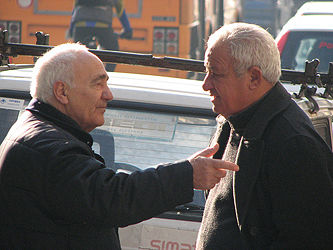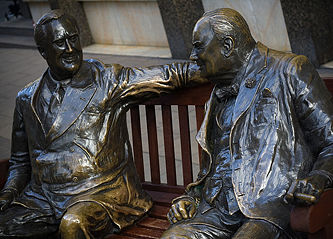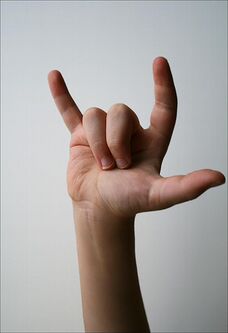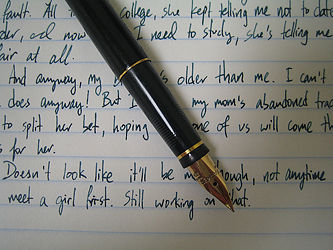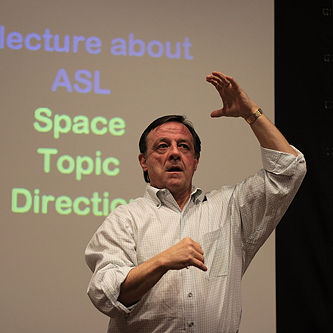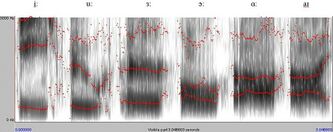Linguistics/Gallery: Difference between revisions
Jump to navigation
Jump to search

imported>Chris Day No edit summary |
imported>John Stephenson (new gallery template) |
||
| Line 1: | Line 1: | ||
{{subpages|group=linguistics}} | {{subpages|group=linguistics}} | ||
<center> | |||
{{Gallery-mixed | |||
< | |caption=Linguistics gallery | ||
{| | |width=333 | ||
| | |lines=3 | ||
|Spoken-language-naples.jpg|[[Human]]s instinctively [[communication|communicate]], as the conversation of these two men in [[Naples]], [[Italy]] shows. | |||
| | |Churchill-roosevelt-statues.jpg|One reason to study [[linguistics]] is its importance in human culture - so important is this urge to [[communication|communicate]] that it is often depicted in [[art]]. | ||
|Asl-i-love-you.jpg|''I love you'' in [[American Sign Language]]. | |||
|Spoken-language-naples-bike.jpg|Stopping and talking is central to human [[culture]]. | |||
| | |Writing-pen-english.jpg|An example of [[written language]] - in this case, [[English language|English]]. | ||
|Asl-lecture-in-asl.jpg|This lecture on American Sign Language is being conducted in ASL. Today, much research on [[sign language]] comes from [[linguist]]s who are themselves [[deafness|deaf]]. | |||
| | |Chinese-keyboard.jpg|[[Language]] may be written using different [[orthography|orthographies]] using modern [[technology]]. This is a [[Taiwan]]ese [[computer keyboard]] allowing input in [[Chinese characters]], [[romanisation|romanised]] [[Chinese language]]s and a script explicitly indicating Chinese [[pronunciation]]. | ||
|marines-poo-diving-shop-japan.jpg|Why this shop name in [[Japan]]? Linguists also investigate how language is used, but how it is 'abused' is left to others. | |||
|Vowels-spectrogram-british-english-adult-male.jpg|[[Phonetics]] often involves modern [[technology]] to analyse speech, providing evidence for linguists on the nature of [[spoken language]]. This [[spectrogram]] as used in [[acoustic phonetics]] shows the [[frequency|frequencies]] of vibrations involved in the production of six [[British English]] [[vowel]]s by an [[adult]] [[male]] [[native speaker]]: from left to right, the vowels as in ''bee'', ''sue'', ''herd'', ''or'', ''bar'' and ''buy''. The bands of energy ([[formant]]s) are distinctive for each vowel; for example, the lower the bottom formant ('F1'), the higher the vowel is articulated in the [[mouth]]. The greater the distance between F1 and the second-lowest 'F2' formant correlates with how far back in the mouth the vowel is produced. This image was created using the [http://www.praat.org Praat] freeware program. | |||
| | }} | ||
</center> | |||
| | |||
| | |||
| | |||
| | |||
</ | |||
Revision as of 02:11, 24 May 2008
| Linguistics gallery | |||||||||||||||||||||||||||||
| |||||||||||||||||||||||||||||
